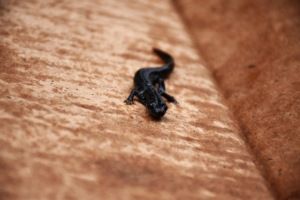News
Reptilicus is back! Only this time it’s an endangered newt holding up a property developer
This article is more than 4 years old.
Vejlands Kvarter residential area in Amager Fælled could be delayed by another year due to concerns

Never mind Repticilus, this little bugger looks like it might develop into Alien (photo: Pixabay)
In the 1961 Danish film ‘Reptilicus’, the country’s answer to Godzilla ravaged Copenhagen on the silver screen.
Now, 60 years later, a relative of the reptilian beast is causing havoc in the capital’s biggest nature area, Amager Fælled, where it is threatening to derail the multi-million Vejlands Kvarter residential housing project, reports Politiken.
Revealing emails
The newspaper has had access to emails shared by the project developer By & Havn and the main investor Pension Danmark, and it would appear that the controversial plans, which involve building 2,000 homes, are likely to be postponed because the great crested newt, an endangered species, is a resident in the area.
The great crested newt (in Danish: stor vandsalamander, although it is not particularly big) population uses several water-holes located in the proximity of the site, which are considered vital to its breeding and future survival on the island.
Likely to be postponed
As things stand, the project is due to start in May, but now it looks likely that it will be postponed until 2022. An internal email sent by a By & Havn project manager last April conceded: “I think we should expect to receive a complaint, no matter what we choose [to do about the newts].”
Options include taking action in the area to ensure the newts aren’t harmed, or moving them somewhere else. What is clear from further emails is that the process of deciding what to do could drag on for months – most likely into next year.
Complaint likely
Danmarks Naturfredningsforening, the Danish society for nature conservation, has already noted that the plans to protect the newt aren’t good enough, and that it might feel compelled to bring the case up with the Environment and Food Complaints Board.
That could signal a significant delay to a project that has already seen off human protests. But for now, it looks like the developers might have met their match in the form of a tiny reptile the size of a child’s little finger.










































